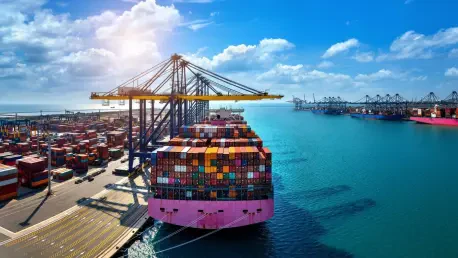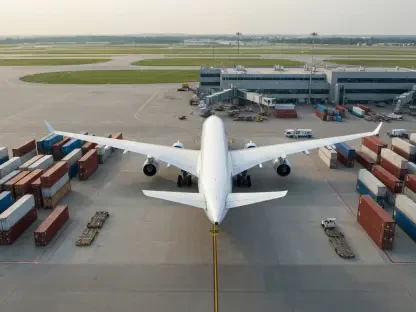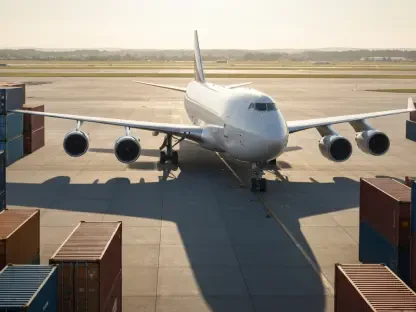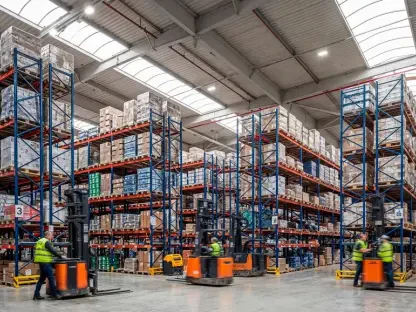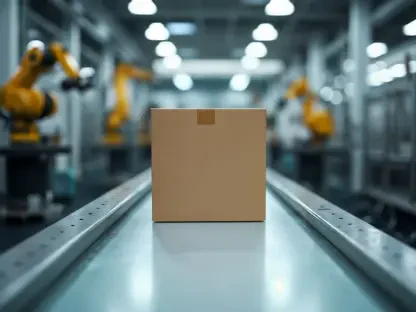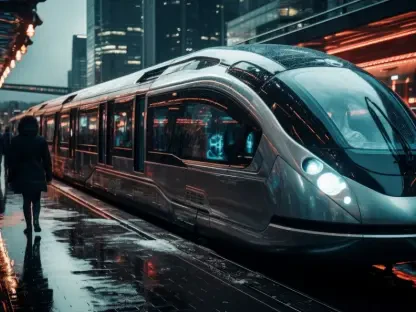In the world of maritime logistics and naval engineering, Captain Luis Carlos Camaño stands out as a leading figure. As the head of the Naval Engineering Department at SENAN’s Naval Maintenance Directorate, he has been instrumental in enhancing the operational capabilities of Panama’s naval assets. With experience from prestigious Naval Academies in Mexico and Spain, Captain Camaño brings a wealth of knowledge to SENAN, focusing on logistics, technology, and international collaboration. This interview sheds light on his strategic vision and the initiatives that promise to transform the maritime landscape in Panama.
Can you describe your role and responsibilities within SENAN’s Naval Maintenance Directorate?
I am primarily involved in planning and controlling our maintenance schedules. This involves developing comprehensive plans for maintaining our naval assets and ensuring that these plans are carried out efficiently. Part of my responsibility is to oversee project management, continuously improving our processes, and managing the life cycle of our vessels to ensure their operational readiness.
How has your experience at the Naval Academy in Mexico and Spain prepared you for your current role?
My education at these esteemed institutions provided me with a strong technical foundation and strategic thinking skills. The rigorous training I received has been crucial in understanding the complexities of naval engineering and logistics. The diverse approaches I learned there have equipped me to handle the challenges of my current role, especially in managing diverse marine platforms and leading teams effectively.
What are the key aspects you focus on when planning and controlling maintenance schedules for SENAN?
When planning maintenance schedules, I prioritize a thorough understanding of each vessel’s operational requirements. Key aspects include assessing the current condition of the fleet, anticipating future needs, and ensuring that all logistics align with our maintenance goals. I also focus on risk management and improving resource allocation to achieve efficiency and minimize downtime.
How do you ensure continuous improvements in processes and the life cycle of the vessels?
Continuous improvement is at the heart of what we do. We implement feedback mechanisms and regularly review our processes to identify areas for enhancement. This includes adopting new technologies and methodologies that can extend the vessels’ operational life. Training and development for our team are also vital in keeping everyone aligned with the latest advancements and best practices.
What strategic vision do you have for logistics, and how does it relate to the Senior Leader Logistics Symposium theme?
My strategic vision is to integrate advanced technology to streamline our logistics processes. This aligns with the symposium theme by focusing on innovative solutions to boost efficiency. Our goal is to modernize procurement processes and enhance risk management through a cohesive technology platform, which in turn supports our overall mission of sustaining naval operations.
Can you explain how the technology platform you plan to acquire will enhance the procurement process?
The technology platform we plan to adopt will create a unified system that links all logistics activities. It will enable us to streamline procurement by providing real-time data and insights, identifying potential risks early, and optimizing our supply chain. This will help us maintain supply levels for crucial maintenance activities and ultimately improve operational efficiency.
What is the Theater Maintenance Partnership Initiative (TMPI), and why is it significant for Panama?
TMPI is a strategic initiative aimed at developing our capabilities in maintenance and training. Hosting the Maintenance Center of Excellence in Panama underlines the importance of this initiative. It equips us to become a regional leader in naval training, ensuring our personnel are well-prepared to handle modern naval challenges and enhancing our national security capabilities.
How is Panama preparing to host the Maintenance Center of Excellence through SOUTHCOM?
Preparation involves setting up infrastructure and curricula to support advanced training. We are collaborating with various programs and leveraging support from SOUTHCOM to build this center. It will serve as a hub for developing technical expertise in maintenance across different areas, positioning Panama as a leader in the region.
What steps are being taken to ensure Panama becomes a regional benchmark in training?
We have established partnerships with local state universities to develop and certify training programs. By aligning our training with academic standards, we ensure that our personnel receive internationally recognized certifications. This positions us as a benchmark for training in the region, drawing attention to our ability to provide high-quality education in naval operations.
Can you elaborate on the importance of human resources and ongoing training to SENAN’s mission and national security?
Human resources and ongoing training are vital to our mission, especially in an era of rapid technological change. Continuous training ensures our technicians and engineers are adept at handling advanced vessels and technologies. This adaptability is crucial for national security, enabling us to maintain operational readiness and effectively combat threats like drug trafficking.
What collaborations or agreements does SENAN have with state universities to develop training programs?
We have robust agreements with state universities to develop and certify our training programs. This collaboration allows us to design curricula that meet international standards and fulfill our operational needs. By integrating academic insights and practical experience, we can offer comprehensive education that empowers our personnel to excel in their roles.
Aside from the maintenance initiative, what other types of cooperative programs exist with the United States?
Beyond maintenance, we engage in programs that enhance our operational capabilities. These include training initiatives for our Marines and Aeronaval commandos, focusing on tactics and strategies for various operations. The cooperation with the U.S. helps us continuously develop these units, keeping them prepared for any mission.
What role does U.S. personnel play in the training for operating and maintaining the reinforced pneumatic boats?
U.S. personnel have been instrumental in training our teams on the propulsion and maintenance systems of these boats. They provide expertise in engine overhauls and operational techniques, which is crucial for optimizing the performance of these units. This collaboration ensures we have the necessary skills to operate and maintain the boats effectively.
How does the partnership between Panama and the Missouri National Guard benefit SENAN’s operations?
This partnership significantly enhances our aviation and maritime capabilities. Joint operations, like responding to fires, have enriched our operational knowledge and fostered close working relationships. By sharing experiences and expertise, we’ve strengthened our abilities to conduct a wide range of operations, benefiting our overall mission.
What joint operations have been carried out with the Missouri National Guard, and how have these strengthened relationships?
Our joint operations have included aviation response efforts, particularly in firefighting. Such collaborations have strengthened our relationship through mutual support and knowledge exchange, building trust and opening avenues for future teamwork. These operations also allow us to test and refine our strategies in real-world situations.
Why is participating in regional symposiums like SOUTHCOM’s SLLS important for SENAN?
Participation in these symposiums allows us to gain insights into the practices of other nations, learn about new technological advancements, and establish strategic collaborations. This exposure helps us improve our capabilities by implementing best practices and adapting innovations to our context, ultimately enhancing our operational effectiveness.
How do you implement what you learn from other countries during these symposiums within SENAN?
We actively incorporate lessons from these symposiums by tailoring them to our operational needs. This involves evaluating new technologies, processes, and methodologies for their applicability to SENAN. We then integrate these insights into our training and operational plans to drive improvement and innovation throughout the organization.
Can you discuss the importance of technological development and collaboration between industry and security institutions for SENAN?
Technological development and collaboration with industry are crucial for advancing our capabilities. By working closely with industry partners, we can adopt cutting-edge technologies that enhance our planning and logistics. Collaboration fosters innovation and ensures our fleet remains at the forefront of maritime technology, increasing our security resilience.
What is your forecast for the future of maritime logistics and naval operations in Panama?
I foresee a period of significant advancement, driven by technology and international partnerships. Our focus will be on enhancing coordination and efficiency across all levels of operations. By embracing innovation and fostering collaboration, we aim to lead in regional maritime logistics, ensuring robust and agile naval operations for Panama.
